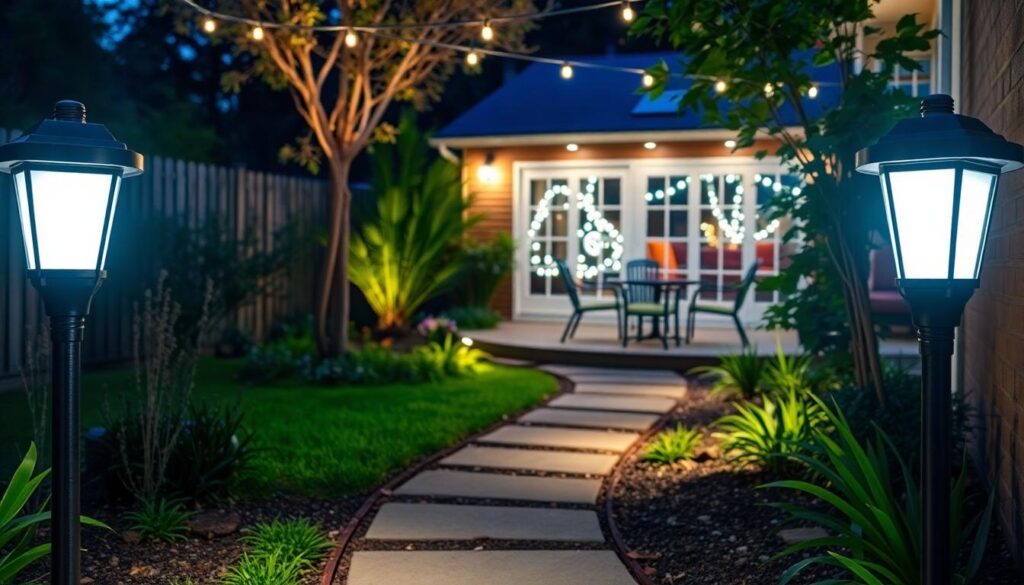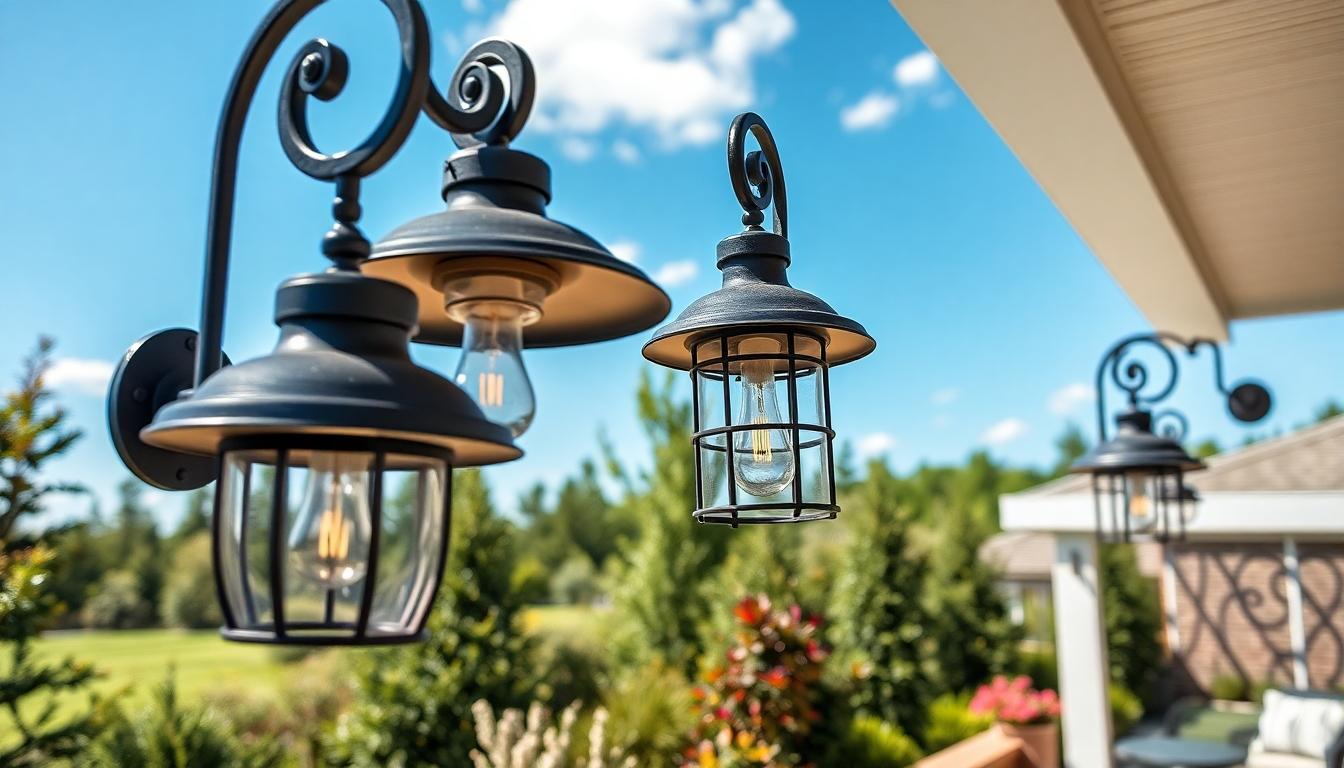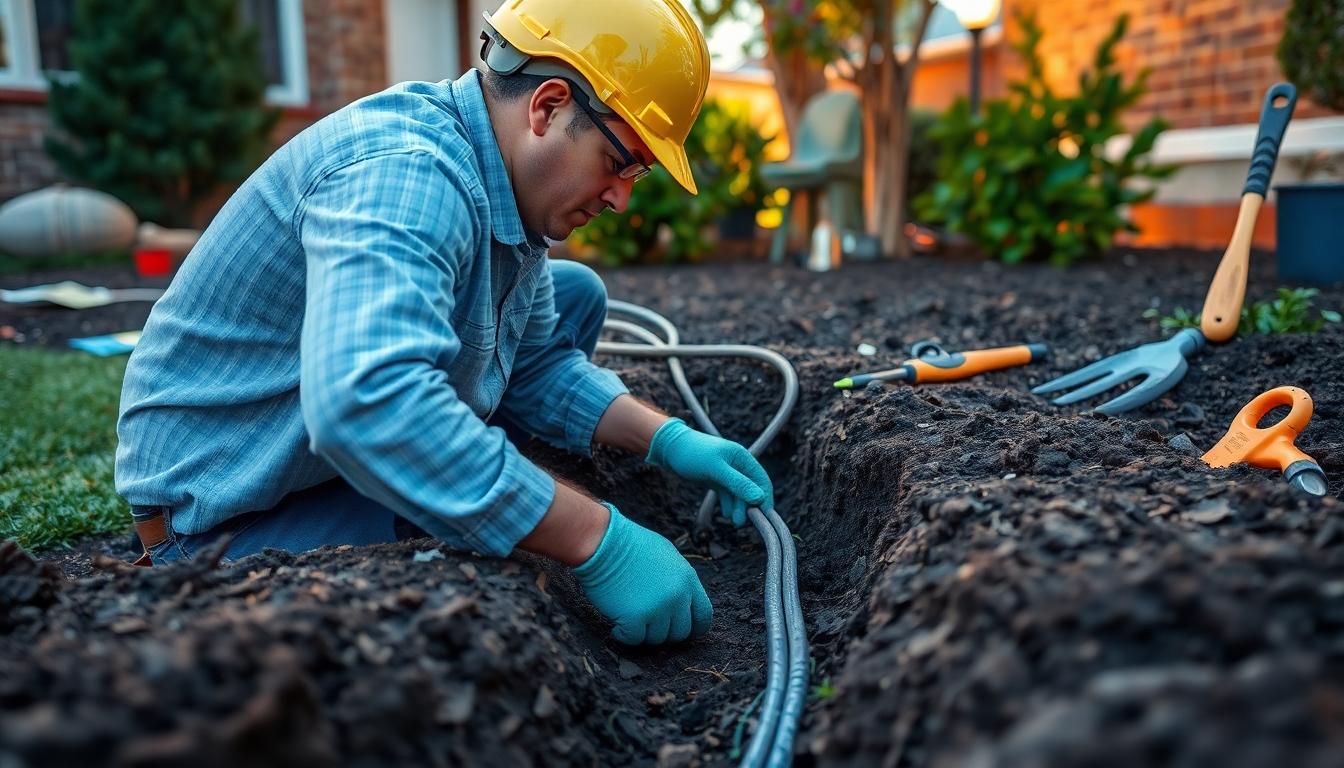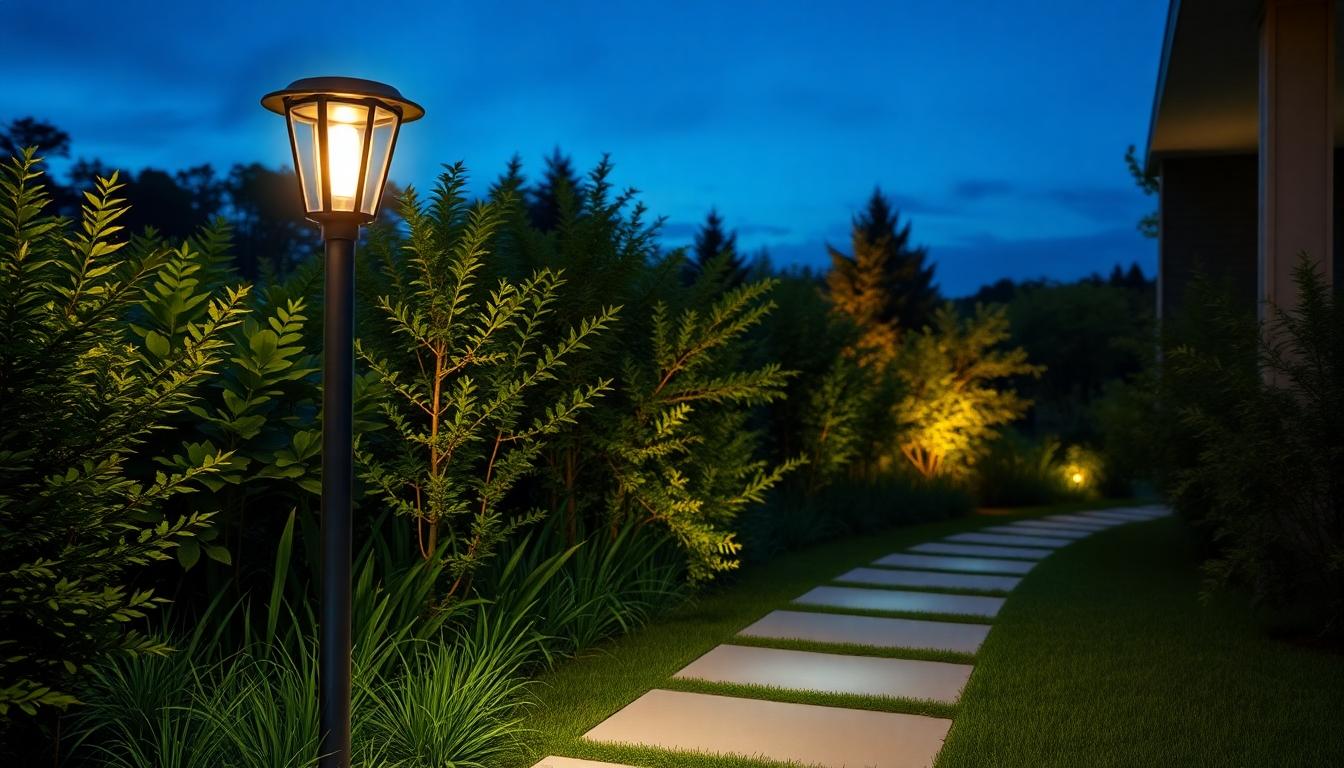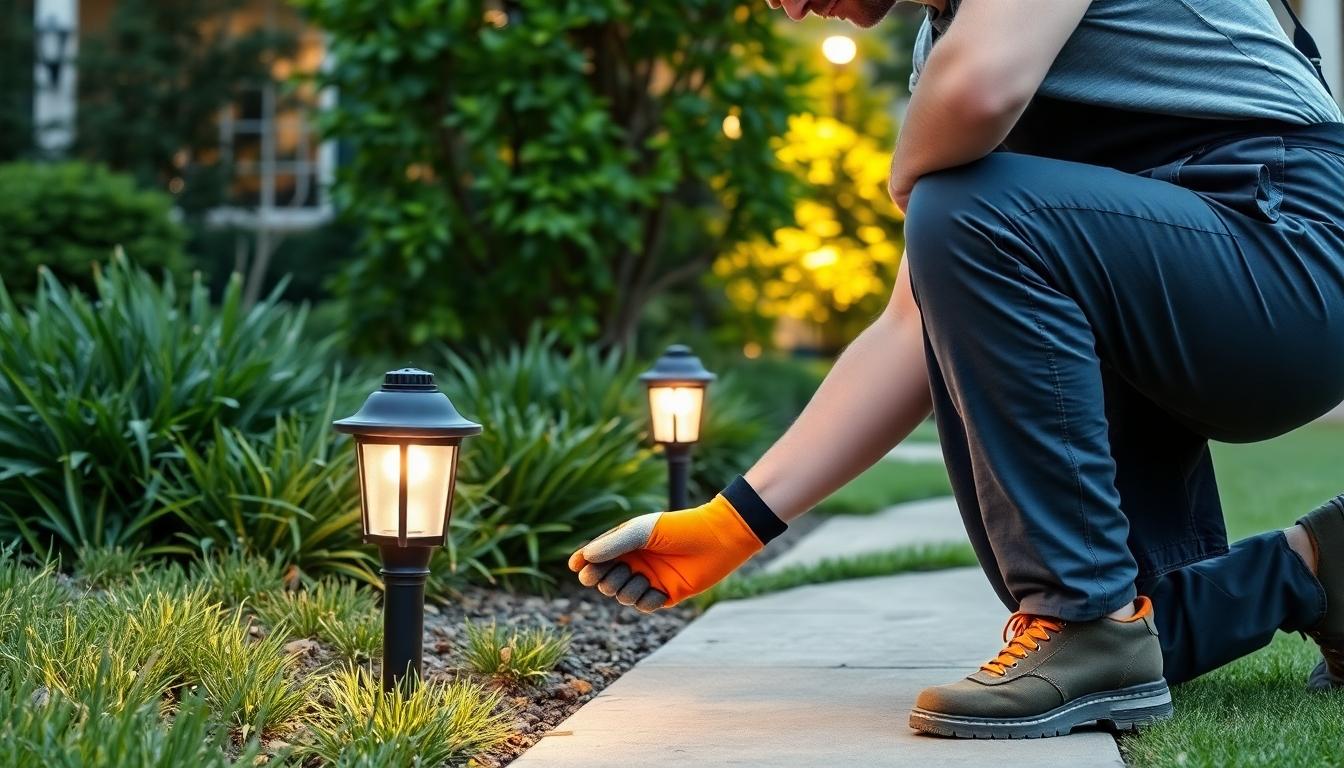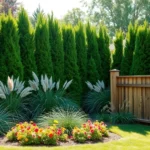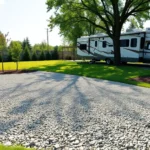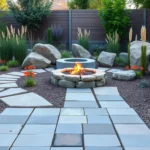Outdoor lighting isn’t just about improving your home’s curb appeal—it’s an essential safety feature that protects your property and loved ones. Proper illumination deters potential intruders, prevents accidents on walkways, and creates a welcoming atmosphere for guests. Yet many homeowners overlook crucial safety considerations when installing outdoor lighting systems.
We’ve gathered the most effective tips to help you create a secure outdoor lighting setup that combines functionality with style. From strategic placement techniques to energy-efficient options, our expert advice will transform your property’s exterior into a well-lit haven. Whether you’re upgrading existing fixtures or starting from scratch, these recommendations will ensure your outdoor lighting works smarter, not harder.
7 Essential Tips for Safe Outdoor Lighting Installation
1. Plan Your Lighting Layout Carefully
Always start with a comprehensive outdoor lighting plan before purchasing any fixtures. Map out your property and identify key areas that need illumination, such as walkways, entry points, and potential hazards. Consider both security needs and aesthetic goals when determining placement. Take note of existing electrical outlets and potential power sources to minimize installation complexity. A well-thought-out plan will save you time, money, and prevent safety hazards down the road.
2. Choose Weather-Resistant Fixtures
Select outdoor lighting fixtures specifically designed to withstand the elements in your region. Look for products with appropriate IP (Ingress Protection) ratings that indicate water and dust resistance levels. Fixtures with ratings of IP65 or higher offer excellent protection against rain and moisture. Materials like brass, copper, and stainless steel provide superior durability compared to painted steel or aluminum options. Weather-resistant fixtures not only last longer but also prevent electrical hazards caused by water infiltration.
3. Ensure Proper Grounding
Proper grounding is non-negotiable for outdoor lighting safety. All outdoor electrical installations must be connected to ground as per the National Electrical Code (NEC). Use ground-fault circuit interrupter (GFCI) outlets for all outdoor connections to prevent electric shock. These specialized outlets automatically cut power when they detect current leakage. For low-voltage systems, ensure the transformer is properly grounded according to manufacturer specifications. Inadequate grounding creates serious shock and fire hazards, especially during storms.
4. Use the Correct Wiring and Connections
Install appropriate outdoor-rated wiring for all exterior lighting connections. UF (underground feeder) cables offer superior protection against moisture and physical damage compared to standard electrical cables. Seal all connections with waterproof wire nuts or connection boxes designed for outdoor use. Bury cables at the proper depth—typically 18 inches for line voltage and 6 inches for low-voltage systems—to prevent accidental damage. Proper wiring practices significantly reduce fire risks and electrical failures in your outdoor lighting system.
5. Install Motion Sensors and Timers
Motion sensors and timers boost both security and energy efficiency for your outdoor lighting system. Position motion-activated lights near entry points, driveways, and vulnerable areas to deter potential intruders. Program timers to automatically turn lights on at sunset and off at sunrise to maintain security without wasting electricity. Smart lighting systems offer additional benefits with remote control capabilities and customizable schedules. These automation features ensure your property remains well-lit exactly when needed without constant manual adjustment.
6. Consider Solar-Powered Alternatives
Solar-powered lighting eliminates many electrical safety concerns while offering environmental benefits. Modern solar fixtures provide increasingly reliable performance with improved battery storage capacity and LED efficiency. Position solar lights in locations that receive ample direct sunlight—typically 6-8 hours daily—to ensure optimal charging. Though they may have higher upfront costs than traditional wired options, solar fixtures eliminate the need for complex wiring and reduce ongoing electricity expenses. Their self-contained design makes them particularly suitable for remote areas of your property without easy access to power.
7. Hire a Licensed Electrician When Needed
Recognize when a project exceeds your DIY capabilities and requires professional installation. Complex systems involving multiple circuits, high-voltage components, or extensive wiring should be handled by licensed electricians. Professionals ensure installations comply with local building codes and safety regulations that homeowners might overlook. Many lighting manufacturers void warranties when products aren’t professionally installed. The initial investment in professional installation often prevents costly repairs and dangerous electrical hazards that can result from improper DIY work.
Choosing Weather-Resistant Fixtures for Lasting Performance
When it comes to outdoor lighting, durability matters just as much as aesthetics. Selecting fixtures that can withstand harsh weather conditions ensures your investment lasts for years while maintaining safety and performance.
Understanding IP Ratings for Outdoor Fixtures
IP (Ingress Protection) ratings are essential indicators of how well a lighting fixture will resist environmental elements. These standardized ratings appear as “IP” followed by two digits that tell you exactly how protected the fixture is against solids and liquids. For outdoor applications, we recommend fixtures with ratings of at least IP44, which provides protection against splashing water and is suitable for covered areas like porches or patios. Fixtures with IP65 ratings offer superior protection, being completely dust-tight and able to withstand low-pressure water jets from any direction. For areas prone to flooding or for pond lighting, look for IP67 or IP68 fixtures that can actually survive temporary or permanent submersion. Remember that higher IP ratings translate directly to better durability against rain, snow, and debris infiltration.
Materials That Withstand the Elements
The right materials make all the difference in how your outdoor lighting handles exposure to weather. Cast aluminum and copper alloys with powder-coated finishes excel at resisting oxidation and corrosion, maintaining their appearance and structural integrity over time. Marine-grade stainless steel offers exceptional resistance to saltwater environments, making it perfect for coastal homes. Polymer options like UV-stabilized polycarbonate or ABS plastics prevent the yellowing and cracking that often occurs with lower-quality materials after prolonged sun exposure. Silicone gaskets play a crucial role in outdoor fixtures by creating watertight seals at fixture joints and connections. All electrical connections should be properly sealed with waterproof wire nuts or heat-shrink tubing to prevent moisture infiltration that could cause dangerous shorts. The best outdoor fixtures combine these durable materials with robust construction and corrosion-resistant coatings to deliver years of reliable performance regardless of what nature throws their way.
Proper Wiring Techniques to Prevent Electrical Hazards
Proper electrical wiring is the foundation of any safe outdoor lighting system. Following correct installation protocols not only ensures functionality but also prevents dangerous electrical hazards that could lead to fires or electrical shocks.
Underground Cable Installation Guidelines
Underground cable installation requires exact techniques to ensure long-term safety and performance. Always use UF (underground feeder) cable that’s specially designed for burial, placing it at least 18 inches deep in a trench to protect it from accidental damage from gardening tools or harsh weather conditions. Direct-burial-rated cables are essential for this application, and you should avoid creating sharp bends that might compromise the cable’s integrity. Routing cables away from high-traffic areas reduces the risk of future damage, while adding protective conduit provides an extra layer of security in vulnerable zones. Before completing any underground installation, we recommend scheduling a professional inspection to verify compliance with local electrical codes. This step might seem time-consuming, but it’s crucial for ensuring your outdoor lighting meets safety standards.
Waterproofing Connections for Outdoor Use
Waterproofing electrical connections properly is crucial for preventing moisture-related failures and hazards. Seal all connections using silicone-filled or gel-type wire connectors specifically designed for wet environments to create a waterproof barrier against moisture infiltration. Select fixtures and junction boxes with IP65 ratings or higher, ensuring they’re equipped to block water and dust from reaching sensitive electrical components. Adding self-fusing waterproof tape around connections provides additional protection against the elements, creating a reliable moisture barrier. Perform regular inspections of all seals and connections, looking for cracks or wear, particularly after extreme weather events like heavy rainstorms or freezing conditions. UL-listed fixtures and weatherproof wire connectors should be standard components in your outdoor lighting system, offering proven protection against environmental challenges. Always turn off the main circuit breaker before handling any electrical components, and consider installing a GFCI-protected circuit breaker for enhanced ground-fault protection that can prevent dangerous electrical situations.
Strategic Placement to Eliminate Dark Zones and Trip Hazards
Strategic placement of outdoor lighting is crucial for eliminating dark zones and preventing trip hazards around your property. Position your lights thoughtfully to create even illumination that enhances both safety and visibility throughout your outdoor spaces.
Illuminating Walkways and Steps
Proper illumination of walkways and steps is essential for preventing nighttime accidents and creating safe passage around your property. We recommend installing low-voltage LED fixtures along paths, positioning them at consistent intervals of 6-8 feet to eliminate shadows and dark spots. These fixtures should be placed strategically along the edges of stairs to highlight each step’s transition, making them immediately visible to anyone approaching. For maximum durability, only use weatherproof, UL-approved fixtures that can withstand various weather conditions throughout the year. Secure all wiring away from high-traffic areas to prevent damage and potential tripping hazards. LED options are particularly effective for pathway lighting due to their energy efficiency, long lifespan, and bright, consistent illumination that enhances visibility without being overpowering.
Highlighting Potential Obstacles
Directing attention to potential obstacles is a critical aspect of outdoor lighting safety that prevents accidents and injuries. Focus your lighting on elements that might obstruct movement, such as trees, decorative features, or uneven surfaces in your industry. Directional spotlights or in-ground well lights work effectively to mark these hazards, making them visible before someone approaches. All electrical connections should be kept away from walkways and high-traffic areas to eliminate tripping risks. Maintain at least a 10-foot clearance between any lighting fixtures and overhead power lines to prevent dangerous electrical situations. Motion sensors installed in these high-obstacle zones provide additional safety benefits by automatically illuminating areas when someone approaches, eliminating the need to navigate dark spaces. Regular inspection of these fixtures ensures they continue to properly highlight potential dangers, especially after severe weather events that might affect positioning or functionality.
Energy-Efficient Options That Don’t Sacrifice Safety
Modern outdoor lighting answers offer both safety and energy efficiency, allowing homeowners to create secure environments without excessive power consumption. Let’s explore eco-friendly options that maintain high safety standards.
Solar-Powered Alternatives for Remote Areas
Solar path lights provide an excellent solution for illuminating walkways without complex wiring installations, making them ideal for gardens and driveways. These fixtures harness sunlight during the day and automatically activate at dusk, delivering reliable illumination exactly where it’s needed. Solar floodlights equipped with motion detection technology offer substantial security benefits in off-grid locations where conventional power sources aren’t readily available. Their self-contained design eliminates the need for electrical connections, reducing fire hazards while maintaining effective security coverage. For remote areas of your property, solar-powered options deliver both practical lighting and enhanced safety without trenching for wiring or increasing your energy bills.
LED Advantages for Outdoor Applications
LED technology dominates the outdoor lighting market due to its important safety and efficiency benefits. These fixtures produce substantially less heat than traditional incandescent bulbs, dramatically reducing fire risks when installed near combustible materials like wooden decking or dry vegetation. LEDs offer remarkable versatility, available in warm color temperatures below 3000K that minimize light pollution while maintaining excellent visibility according to Dark Sky guidelines. Their directional shielding capabilities direct light downward precisely where needed, reducing wasteful skyglow and potentially hazardous glare for drivers and pedestrians.
From a cost perspective, LED fixtures deliver impressive long-term savings through reduced energy consumption and less frequent replacements. Their extended lifespan often exceeds 25,000 hours, limiting maintenance needs and associated safety risks from ladder work. Smart controls like timers or dimmers further enhance LED efficiency by minimizing unnecessary usage while maintaining essential visibility for security purposes. When selecting outdoor lighting, we recommend prioritizing fixtures with UL approval that incorporate LED technology to ensure optimal safety, performance, and energy conservation.
Motion Sensors and Timers for Enhanced Security
Motion sensors and timers represent two of the most effective technologies for improving your home’s security through outdoor lighting. These smart additions transform basic illumination into active security systems that respond to environmental changes and potential threats.
Motion-Activated Lighting for Deterrence
Motion-activated lighting serves as a powerful deterrent against potential intruders by instantly illuminating areas when movement is detected. This sudden burst of light makes it significantly harder for unwanted visitors to remain unnoticed on your property. Many homeowners install these sensors near entry points, garages, and dark corners of their yards where an intruder might attempt to hide. The effectiveness of motion sensors comes from their ability to create an immediate response to presence, often startling trespassers and drawing attention to areas that would otherwise remain dark and vulnerable.
Timers for Consistent Protection
Timers offer excellent security benefits by establishing consistent lighting patterns that mimic occupancy even when you’re away from home. By automating your outdoor lights to turn on and off at exact times, you create the illusion that someone is present, which often discourages opportunistic burglars. Smart timers can be programmed to follow varying schedules throughout the week, making the patterns less predictable to anyone monitoring your home. This technology provides continuous protection without requiring your constant attention, making it an invaluable component of any comprehensive home security strategy.
Programming Smart Lighting Systems
Smart lighting systems take security illumination to the next level with customizable schedules that adapt to your needs. These advanced systems allow you to program lights to change brightness or color based on time of day, weather conditions, or exact events like holidays or parties. Many smart systems can gradually increase brightness at sunset and decrease it at sunrise, creating natural lighting transitions that enhance both security and aesthetics.
Remote control and monitoring capabilities give you unprecedented control over your outdoor lighting through smartphone apps. This technology allows you to adjust settings from anywhere, turning lights on when you’re running late or creating lighting scenes to deter intruders while you’re on vacation. Some systems even integrate with home security cameras, automatically brightening areas when suspicious activity is detected and sending alerts to your phone with video footage.
Backup Power Answers for Critical Areas
Solar-powered lights provide reliable backup illumination for areas with frequent power outages. These independent lighting units harness energy during daylight hours and release it after dark, ensuring critical pathways and security zones remain lit regardless of grid power status. Modern solar fixtures offer impressive brightness and duration, with many featuring built-in motion sensors for additional security benefits.
Battery backup systems represent another crucial layer of protection for lights in essential security areas. These systems automatically engage during power failures, maintaining illumination around entry points, walkways, and vulnerable areas. For maximum protection, we recommend installing battery backups for motion-activated security lights near doors, windows, and property access points. The latest backup answers can provide hours of continuous operation, giving you peace of mind during extended outages.
Regular Maintenance Practices to Ensure Continued Safety
Maintaining your outdoor lighting isn’t just about aesthetics—it’s essential for safety and longevity. Regular upkeep prevents hazardous conditions while ensuring optimal performance of your lighting system. Here are key maintenance practices to carry out:
- Clean fixtures regularly with mild soap and water to remove accumulated dirt and debris, which ensures optimal brightness and functionality.
- Inspect wiring every 3 months for signs of fraying, corrosion, or loose connections, addressing any issues promptly to prevent potential short circuits.
- Replace burnt-out bulbs immediately to maintain consistent illumination throughout your property and avoid overloading electrical circuits.
- Relamp groups of lights that are approaching the end of their lifespan simultaneously to reduce long-term maintenance costs.
- Use insulated, weather-resistant materials in harsh climate areas to prevent premature damage to your lighting system.
Seasonal Inspection Checklist
- After extreme weather events: Thoroughly check outdoor lighting for water damage, displaced fixtures, or exposed wires that could create safety hazards.
- Annual maintenance: Remove lens caps to clear any debris that has accumulated inside fixtures and lubricate sockets and seals to prevent corrosion.
- Verify electrical protection: Test surge protectors and grounding systems annually to ensure they’re functioning properly against power surges.
- Vegetation management: Trim overgrown plants and bushes near lighting fixtures to prevent fire risks and ensure light isn’t obstructed.
- Safety protocol verification: Confirm ladder safety procedures are followed when accessing elevated fixtures, including horizontal carrying and avoiding power lines.
When to Call a Professional
While many maintenance tasks can be handled by homeowners, certain situations require professional expertise:
- Exposed or damaged wiring that needs complete rewiring should always be handled by licensed electricians to ensure safety and code compliance.
- Frequent circuit tripping when outdoor lights are in use indicates potential overloads or faulty components that require professional diagnosis.
- Pole-mounted fixtures that need relamping or repairs often require specialized equipment and training that most homeowners don’t possess.
- Electrical system upgrades such as adding new circuits or expanding your outdoor lighting network should be performed by qualified professionals.
- Uncertainty about repairs should prompt a call to an electrician—when in doubt about electrical work, professional intervention prevents personal injury and property damage.
Balancing Aesthetics and Safety in Your Outdoor Lighting Design
Implementing these outdoor lighting tips won’t just enhance your home’s security—it’ll transform your exterior spaces into safe yet inviting environments. We’ve seen how strategic placement paired with weather-resistant fixtures creates the perfect balance of functionality and style.
Remember that outdoor lighting isn’t a set-it-and-forget-it solution. Regular maintenance ensures your system remains effective while extending its lifespan. Whether you choose traditional wired options or innovative solar alternatives, prioritizing proper installation techniques is non-negotiable.
By investing in quality materials, appropriate IP-rated fixtures and smart technologies, you’re making a long-term commitment to your property’s safety. The peace of mind that comes from well-designed outdoor lighting is truly priceless—and now you have the knowledge to make it happen for your home.
Frequently Asked Questions
What are the key benefits of outdoor lighting for home security?
Outdoor lighting significantly enhances home security by deterring potential intruders, eliminating hiding spots, and creating the impression that someone is home. Proper illumination around entry points, walkways, and vulnerable areas makes unauthorized access more difficult and risky for burglars. Additionally, well-lit exteriors allow homeowners and security cameras to better identify suspicious activity.
What IP rating should I look for in outdoor lighting fixtures?
Choose outdoor lighting fixtures with at least an IP44 rating for basic weather resistance. For areas with heavy exposure to rain or sprinklers, opt for IP65 or higher. The first digit represents protection against solid objects (dust), while the second indicates water resistance. Higher ratings provide better protection against environmental elements, ensuring longer fixture life and safer operation.
Which materials are best for outdoor lighting fixtures?
The most durable materials for outdoor lighting include cast aluminum, brass, copper, and marine-grade stainless steel. Cast aluminum offers excellent corrosion resistance and durability at a reasonable price. Copper and brass develop attractive patinas over time while remaining functional. Marine-grade stainless steel (316 grade) provides superior resistance to salt air and coastal environments. Avoid plastic fixtures in areas exposed to direct sunlight.
How deep should I bury outdoor lighting cables?
Bury standard outdoor lighting cables at least 6 inches deep for low-voltage systems (12-15V). For line voltage (120V) cables, national electrical codes typically require burial depths of 18-24 inches, depending on your local regulations. Always use cables specifically rated for direct burial with proper conduit protection where required. Check local building codes as requirements vary by location.
Are solar-powered lights reliable for security purposes?
Modern solar-powered security lights can be reliable if you choose quality products with sufficient battery capacity and bright LED outputs. The best models include motion sensors, backup batteries that store 2-3 days of power, and brightness levels of 800+ lumens. Position solar panels in locations with 6-8 hours of direct sunlight. For critical security areas, consider hybrid systems with traditional power backups.
How can motion sensors enhance outdoor lighting security?
Motion sensors dramatically improve security by creating a surprise element when activated, startling potential intruders. They conserve energy by operating only when needed while giving the impression someone is responding to movement. Strategic placement around entry points, driveways, and blind spots provides comprehensive coverage. Modern sensors can differentiate between pets and people, reducing false activations.
What maintenance does outdoor lighting require?
Regular maintenance includes cleaning fixtures quarterly to remove dirt and debris that block light output. Inspect wiring connections twice yearly for signs of wear or damage, particularly after storms. Replace burnt-out bulbs promptly and check for water infiltration in fixtures. Trim vegetation that may obstruct lights or damage wiring. Test motion sensors and timers seasonally to ensure proper operation.
Can I install outdoor lighting myself or should I hire an electrician?
You can safely install low-voltage (12V) lighting systems yourself with basic DIY skills. These systems use transformers to reduce shock risk and typically feature simple plug-in connections. However, line voltage (120V) installations should be performed by licensed electricians to ensure code compliance and safety. Always hire professionals for complex setups involving new circuits, permanent wiring, or installations requiring permits.
How do LED lights compare to traditional bulbs for outdoor use?
LED lights significantly outperform traditional bulbs outdoors by consuming 75-90% less energy while lasting 15-25 times longer. They operate cooler, reducing fire risks, and perform better in cold temperatures. LEDs reach full brightness instantly, unlike fluorescents that struggle in winter. Though initially more expensive, LEDs provide substantial savings through reduced replacement costs and lower electricity bills while offering comparable or superior brightness.
What backup lighting options work during power outages?
Effective backup lighting options include battery-operated lights with photocell sensors that activate automatically during outages. Solar-powered pathway lights maintain illumination of walkways without grid dependence. Battery backup systems can support critical security lights for 4-8 hours during blackouts. Generator-connected lighting circuits provide extended protection for important areas. Smart emergency lights that detect power failures and activate automatically offer convenient protection.

